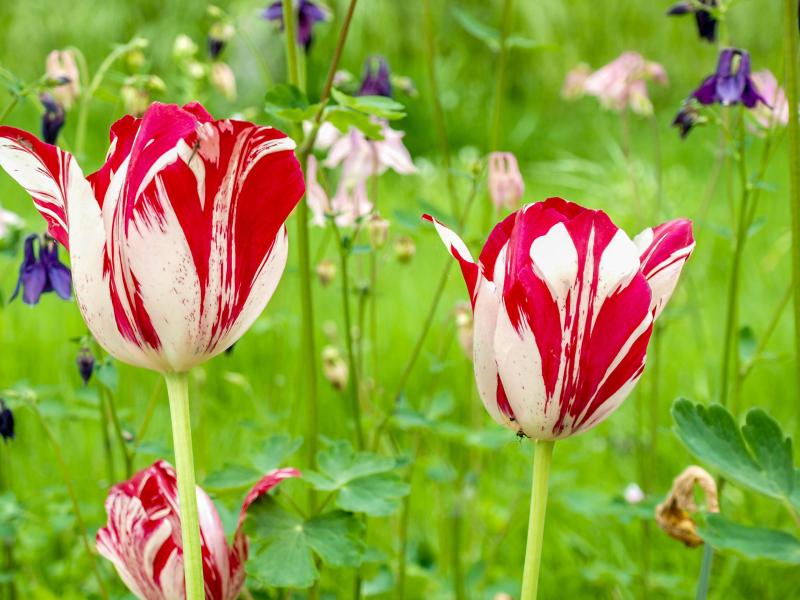Share:
The virus that made tulip mania
September 20, 2023
Not all viruses are bad. For example, certain viruses allow cows to turn cellulose from grass into sugars that eventually are made into milk.
A virus in tulips, the TBV, or tulip-breaking virus, caused amazing color patterns in tulips but also weakened the bulb. After many generations the bulbs became weaker, until they would be too weak to flower and the genetic line died off.
Tulips are originally from central Asia, and Turkey introduced tulips to the Netherlands in the 17th century. The Dutch were soon the leading tulip producers in the world. The broken tulips were responsible for the first recorded financial bubble in 1634, until 1637 when a single bulb could sell for the price of a house in Amsterdam. The red-and-white striped tulip Semper Augustus was the most sought-after and most expensive tulip.
Soon tulip bulb traders wrote contracts to buy bulbs at the end of the season. These futures contracts were then bought and sold, like modern commodities futures. While the broken tulips of tulipmania are long gone gardeners can still grow broken-colored modern tulips that are virus-free. Look for the tulip varieties World Expression, Happy Generation and Sorbet. There are also Rembrandt tulips, which are striped or streaked with a second color. Rem’s Favorite has interesting purple flames against bright-white petals. Fire Wings and Mickey Mouse are both red with yellow streaks. Rembrandt tulips are named for the Dutch painter Rembrandt Harmenszoon van Rijn.
All tulips grow best in rich, well-draining soil. If your soil is heavy clay, try planting in containers or raised beds for better drainage. Or add well-rotted manure or compost before planting. Tulips grow in acidic or neutral soil and are hardy in USDA Zones 3 to 8. All tulips prefer full sun. They need 12 to 14 weeks of temperatures below 55F to blossom. Plant them pointy side up, three times as deep as the bulb's height, spaced about six inches apart. For the best effect, plant tulips in masses rather than single rows.
You can feed your broken tulips with a general fertilizer (5-10-5) in early spring, and again after the blooms fade. Cut off the old flower stalks immediately after they fade to prevent the plants from producing seed pods, which drain the bulb's energy and shorten its life. Leave the foliage until it turns yellow in late summer to replenish the bulb's energy. They will need to be replanted every few years with new bulbs to keep the flowerbeds full.
While you may never own a canal house in Amsterdam or a single bulb of Semper Augustus, you can plant Rembrandt-type tulips and have your own tulip mania next spring. No virus needed.























































